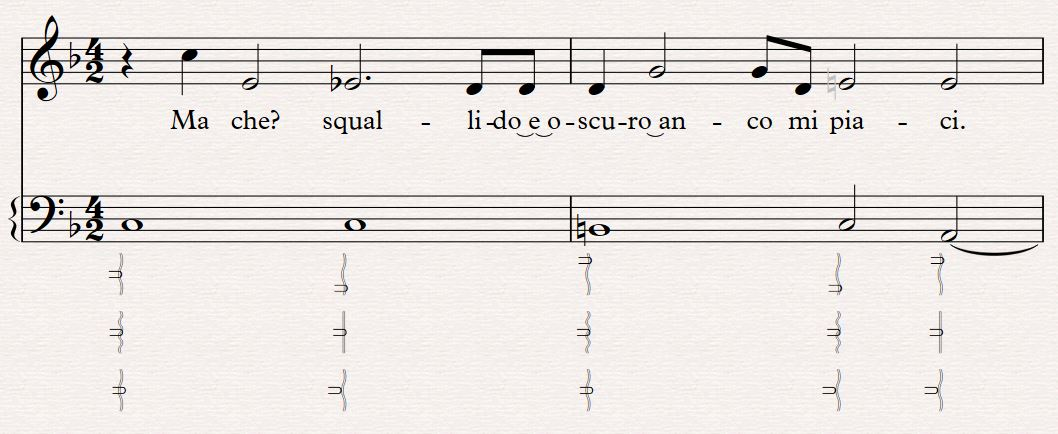5.2. Exercises to Develop Control Through Change
As a result of this, I created exercises which allowed me to observe and control these different elements distinctly. Here I have taken first two bars of the same song, and changed one element for each line of timbral realisation.
The first line only changes the string height, the second, attack speed, and the third, finger contact. This allows me to refine each element independently through controlling how it changes, to insure that I am not relying entirely on one individually. The same principle as practising scales to develop control and strength, with the smooth plane of the scale revealing inconsistencies.
Maintaining consistency in the other two elements ensures that those elements are not compensating for weaknesses in the third. Such inconsistencies of control or variation would be detrimental to the control of timbre generally. For example, string height is very easy to rely on for high contrast, but it is not as effective if I am not making use of these other, equally important elements, and creates a rather hollow sound. With a few simple markings, this technique can be easily adapted to make timbral studies of repertoire.
